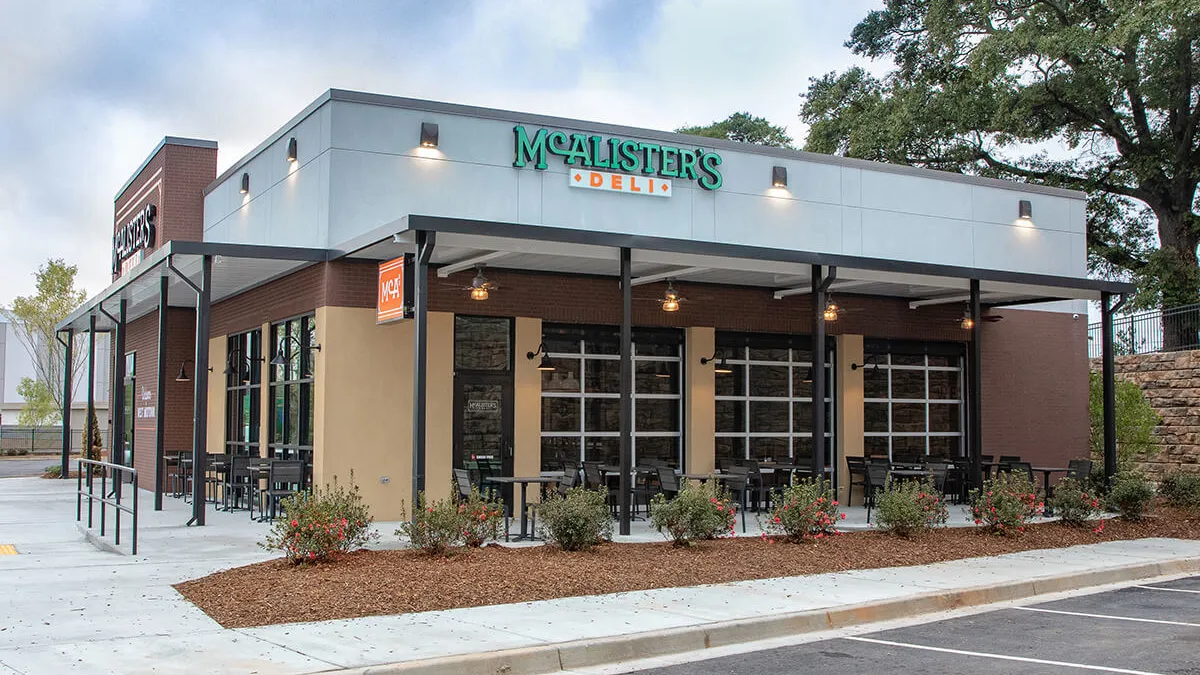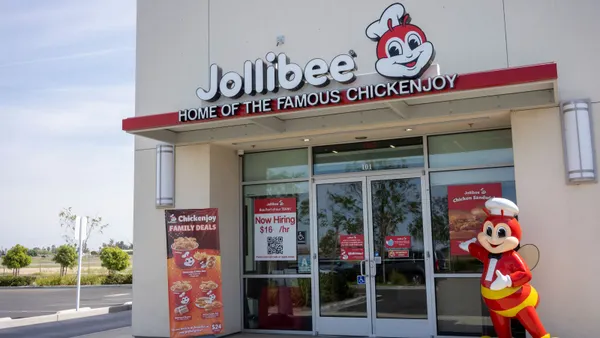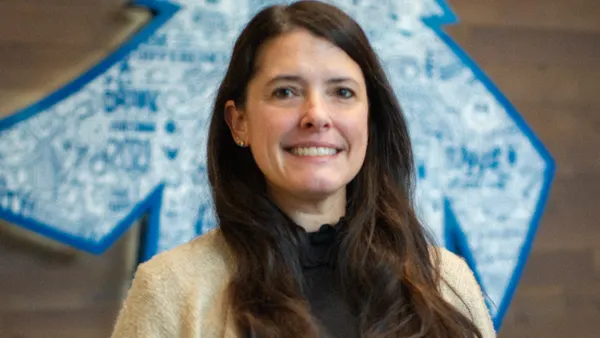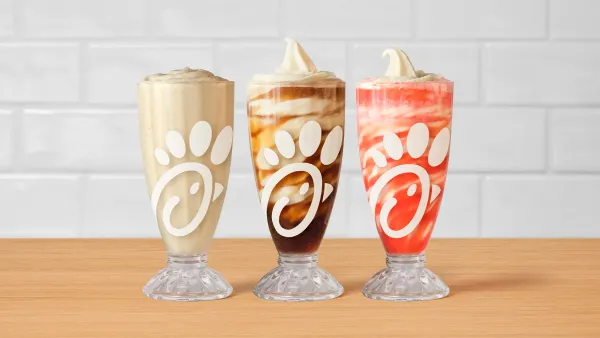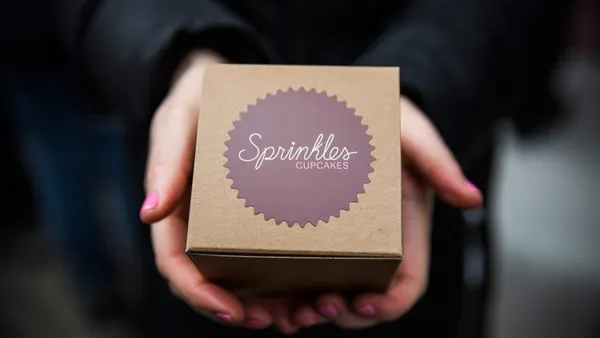After working at McAlister's for over a decade, Mike Freeman, chief brand officer, has seen all parts of the company at work. He started at the deli chain as an assistant manager in a Louisiana store. He then rose through the ranks, moving into the corporate office in the training department and later overseeing company-owned restaurants before becoming vice president of operations. But in his newest role as chief brand officer, Freeman will witness the Focus Brands' restaurant reach an important milestone: becoming a billion-dollar brand by 2024.
"It's been so fun to watch the maturation of the brand," Freeman said. "[It] went from a very regional brand in the Southeast to this very rapid growth plan and expansion that has now got us on a national radar [and] a trajectory that is just outstanding."
The restaurant, which opened its 500th location in October, is developing an average of 50 to 60 units a year and expects to reach between 650 and 700-plus units by 2024, Freeman said. The company currently has a pipeline of 300 units across multiple states.
Restaurant Dive spoke with Freeman to learn more about the company's growth strategy, how it overcame pandemic disruption and how it is offsetting the challenges that come with rapid growth as it moves closer to that $1 billion mark.
Editor's note: This interview has been edited for clarity and brevity.
RESTAURANT DIVE: Where are you in terms of your trajectory to become a billion-dollar brand?
MIKE FREEMAN: In 2018, we unveiled a new prototype, a new logo, basically rebranding different images and interior design elements. Franchisees really responded positively to that. That was really the jumpstart to this rapid growth model that we're in today. Being able to get into the brand cheaper, with better real estate, and having a better user experience really are at the center of our strategy. The pandemic had a significant impact on the growth of the brand but we always led with consumer experience. When we lead with consumer experience, the franchisee appeal is fast following all the time. With our great top lines and great bottom lines, our franchisees’ belief in the brand has never been stronger.
Being able to take a very small regional brand that was created in Oxford, Mississippi, to a nationally recognized, billion-dollar brand in just a few short years is super exciting for us.
How have you become more attractive to franchisees?
Franchisees these days have a lot of choices to make. And we wanted to lead with excellent restaurant-level economics. And to do that we had to optimize buildout costs. That was everything from material and finish work to square footage. The pandemic taught us a lot of different things about size and space required to execute our brands, what people actually love the most about us and being flexible along the way. It's been a lot easier to find real estate that was a little bit smaller, so we had to flex our prototype.
We invested heavily in digital to boost our topline revenue. But then we also maximized our flow- through by protecting our profitability and our margin enhancements. This led to attracting a more sophisticated franchisee to our system, which then brings more developed infrastructure and more accessibility into growth markets.
We also have an excellent resource in real estate, to be able to source and deploy better positioning in those growth markets. We are investing in tools for our franchisees to make better decisions. We have a real estate team that's powered by Focus Brands that assists our franchisees in sourcing the best sites that are available. They produce excellent alternatives to traditional and nontraditional locations. Now we can think differently about the size and the square footage and what we actually need.
So many lunch brands struggled during the pandemic. What did you do differently to allow your brand to keep growing?
We just refused to fail. Our team members and our store-level employees, our general managers, just were embraced by the communities. Launching the McAlister's app right before the pandemic was really the saving grace for our brand.
We had so many different avenues to then access our guests in different ways that weren't prohibitive during the pandemic. For example, first-party delivery where you can order directly from our website. We offered group packages for different meals. We offered multiple third-party delivery channels. We had touchless dining, where customers order from our app and skip the line, as a tableside service that we were able to deploy. By having those curbside capabilities and features present within the digital channels, specifically in the app, we just saw a ton of traffic. It almost tripled our sales volume.
We made good decisions in conjunction with our franchisees. We communicated heavily to both our franchisees and our guests, and we were able to protect our AUVs so we could remain open during the whole pandemic. We took care of our people extremely well. The recovery was abbreviated because we did all these things. So we were able to stand back up faster than a lot of our competitors.
How are you addressing labor shortage challenges as you grow?
While we're seeing a smaller number of applicants, it's still very healthy. Some of the best compliments that we get are when parents send their children to us for their first job. And what we turned our attention to was just a different audience of who we were trying to hire talent from and how we would bring new people into the workforce. We also offer systems that are applicable to a younger audience that played well. We have mobile scheduling, different management styles and approaches to our onboarding.
We spent the time teaching soft skills, interpersonal skills and life skills. We stood up a lot of career programs with special needs partners, and did whatever we had to do to make sure that we were ingraining ourselves in our community, doing it the right way. While we didn't see our normal 100 applicants for a new restaurant, we were still seeing 80 people show up. That was not presenting us any hurdles for the ability to train, open and deliver our brand and our customer experience.
How are you overcoming the supply chain obstacles?
We work really closely with our partners in both the distribution center network and within our own resources at Focus Brands to make sure that everyone is on the same page with our development strategy. It's making sure that they know the growth markets that we're interested in. We use a web-based project management system. Everyone understands the tracking mechanisms associated with that, so that there are no gray areas and everyone's aligned.
Obviously, we have substitutions and product outages along the way, but that's where we do flex and we have those nimble digital assets and resources to be able to manage our menu differently. No one ever wants to be out of anything, and we've done a great job maintaining almost a 90% product rate throughout the entire pandemic. But everyone's had to make difficult decisions along the way. And we've had really creative solutions from all of our partners, both in supply chain and human resources, to make sure that we don't have to miss a beat anywhere along the line.
What does the coming year hold for McAlister's?
In 2022, we expect to grow over 10% as a system, enter into an open catering market force as business returns to the workplace. I think our workforce will return to 2019 levels, and I think that the off-premise and dine-in channel mix shift will stabilize a bit. I think coming out of 2020 and 2021, we've seen a lot of resilience in operations, and for all of our brands in the industry. So I think 2022 offers a lot of upside for a lot of people that did well in 2021. Hopefully, we will spend time on menu innovation, menu optimization and simplifying operations for the brand teams. Making us an attractive place to work and becoming an employer of choice is something that's top of mind for all of us.



